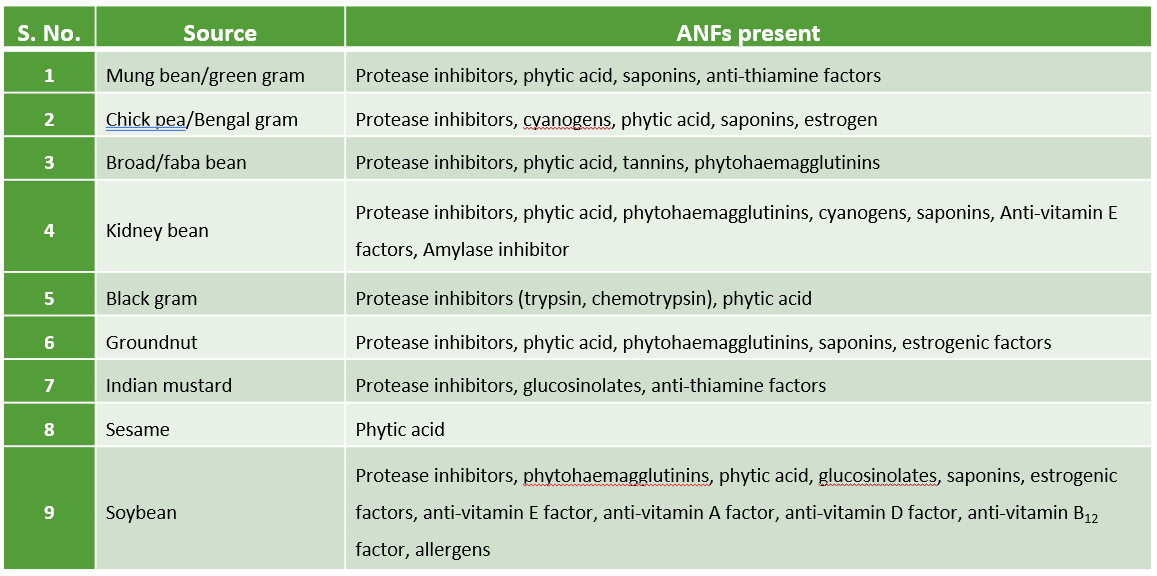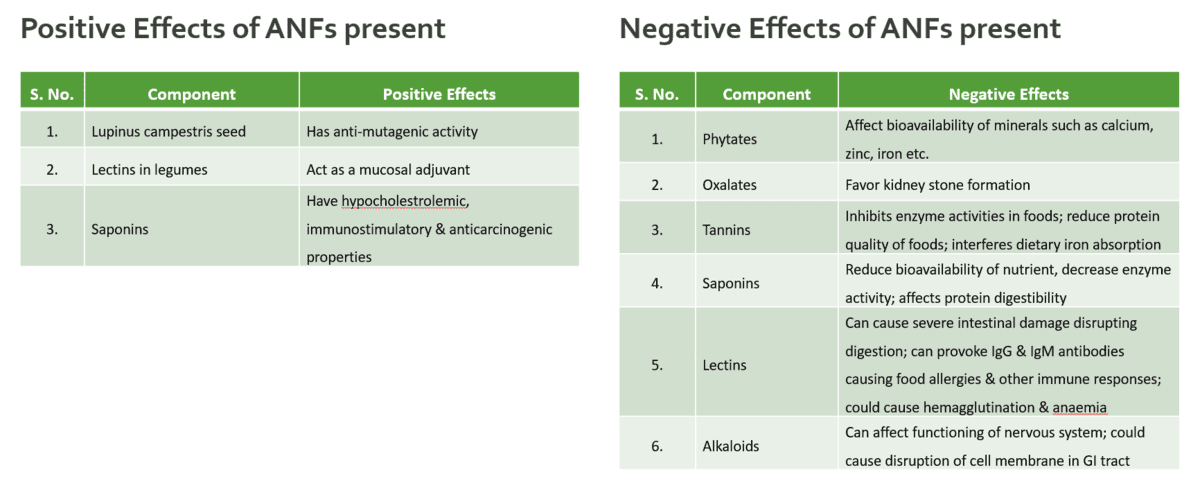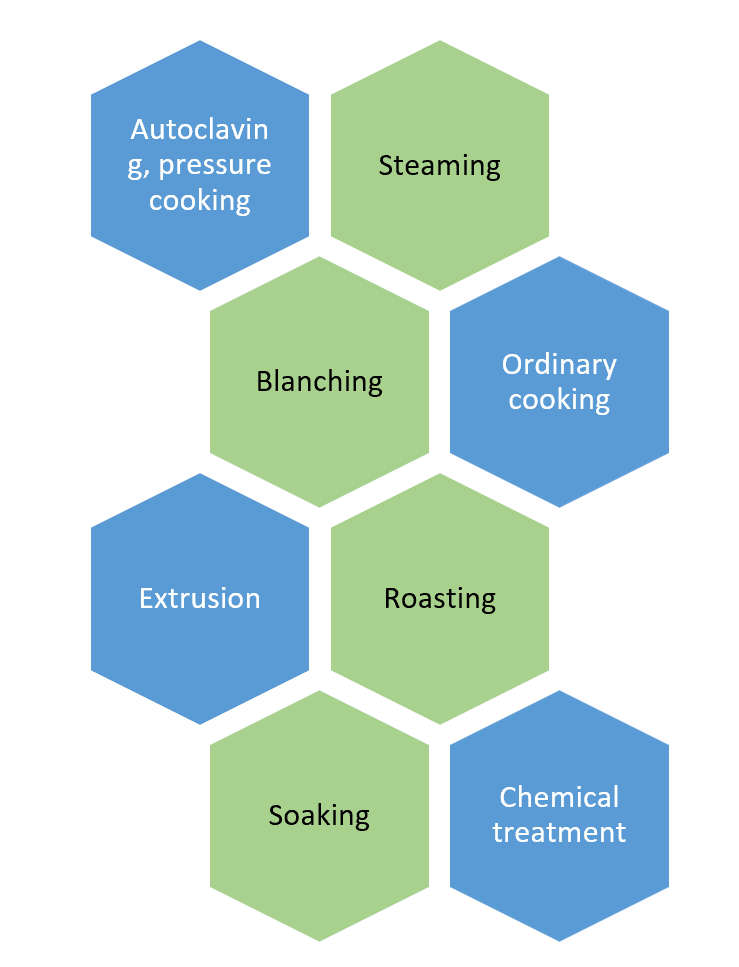What Are Anti‑Nutritional Factors (ANFs)?
Anti‑nutritional factors (ANFs), also known as anti‑nutrients, are naturally occurring substances in foods—primarily plant‑based—that interfere with the body’s ability to absorb, digest or utilise essential nutrients.
How Do ANFs Impact Nutrient Absorption?
- These compounds create barriers in nutrient uptake in several ways:
- They bind to minerals such as iron, zinc, and calcium, making them unavailable for absorption.
- They inhibit digestive enzymes like proteases and amylases, thereby reducing protein and carbohydrate digestibility.
- In some cases, they may interfere with organ function or metabolic utilisation of nutrients.
Common Types of ANFs
Here are examples of anti‑nutrients and where you’ll typically find them:
- Phytates (Phytic Acid): Present in cereals, legumes and nuts; they bind minerals and reduce their bioavailability.
- Tannins and Polyphenols: Found in legumes, grains and some vegetables; they reduce protein and mineral digestibility.
- Protease and Amylase Inhibitors: Common in oil seeds and legumes; they block key digestive enzymes.
- Goitrogens, Oxalates, Lectins: Occur in certain plants and can impair mineral uptake or cause other adverse effects.
Are ANFs Always Bad?
Interestingly, not always. At low levels or through proper processing, some anti‑nutrients may exhibit beneficial properties, such as reducing cholesterol or moderating blood sugar.
Studies show that most of the anti-nutritional factors are from plant origin. Some of these compounds are tannins, oxalates, phytates etc. Oil seeds like groundnut, rapeseed, soy bean & Indian mustard contain protease inhibitors which have the ability to inhibit the activity of proteolytic enzymes within gastro-intestinal tract of animals. Oil seeds contain other anti-nutrients as well. Soy bean is known to have phytic acid, saponins, estrogenic factors, anti-vitamin E factor, anti-vitamin A factor and anti-vitamin D factor.
Some of the pulses have also been identified to contain anti-nutrients. For example, protease inhibitors are present in broad/faba bean, chick pea/Bengal gram, cow pea and kidney bean. Phytic acid & saponins are present in chick pea, kidney bean & mung bean/green gram. There are various other natural foods that contain anti-nutrients.
Anti-nutrients present in some of the foods are given below.

If the presence of such compounds exceeds an upper limit, it may lead to undesirable effects in human beings. However, research shows that when present in small amounts, some anti‑nutritional factors and their breakdown products can provide beneficial health effects.
Lack of knowledge of the tolerance levels to these compounds in human body, little available information on the degree of variation of individual risks & limited understanding on the influence of environmental factors on the detoxification capacity of human body are the risk factors associated with anti-nutrients.
Anti-nutrients can be primarily classified into two groups – heat-stable & heat-labile group. Phytic acid, condensed tannins, alkaloids, saponins are those possessing heat-stable property. Those anti-nutrients that are sensitive to high temperature are lectins, cyanogenic glycosides, protease inhibitors & toxic amino acids.
Here are a few of the adverse effects caused by some of the anti-nutrients in body. Phytates could cause reduction in calcium & iron absorption in body. Presence of oxalates may also reduce calcium absorption & would favour kidney stone formation. Higher amount of phenol compounds may reduce the bioavailability of some minerals, especially, zinc. Also, they may negatively affect pH mechanism & reduce protein digestion.
The anti-nutrients exert both beneficial & anti-nutritional factors by the same mechanism.


Some changes in processing conditions, in addition to removal of some unwanted compounds in foods will help eliminate the deleterious effects of anti-nutrients. Some of the processes that could aid removal of ANFs from foods are listed alongside.
References:
- “An overview of anti-nutritional factors in foods”, International
Journal of Chemical Studies, Abhishek Thakur, Vishal Sharma & Aayushee
Thakur. - “Anti-Nutritional factors in foods and their effects”, Journal of
Academia and Industrial Research, Parul Bora. - “Antinutritional factors in plant foods: Potential health benefits and
adverse effects”, International Journal of Nutrition and Food Sciences,
Habtamu Fekadu Gemede, Negussie Ratta.